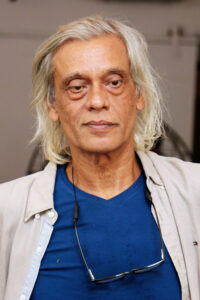Against the backdrop of student-led protests across the country, Deepa Gahlot takes a look at Sudhir Mishra’s film which tackled this subject 32 years ago
As the country erupts into political protests, led by students, Sudhir Mishra made a statement about planning to remake his first film, Yeh Woh Manzil To Nahin (1987), which was about youth unrest.
The story is set in Rajpur, where the local politician-industrialist nexus, leads to brazen murder of workers and a student leader. The university is all set to celebrate its golden jubilee when the tumult on the campus and the resulting curfew stirs up the sleepy township.
Ignorant about the troubles in Rajpur—this being the era before the telecom revolution—three Mumbai-based buddies (played by theatre doyens of the time) are planning a trip there after 40 years, for the jubilee function at their alma mater. The film begins with their bickering, Shamsher Bahadur Singh (Manohar Singh), Akhtar Baig (Habib Tanvir) and Murli Manohar Joshi (BM Shah) fling drunken insults at each other. There is a suggestion that something about their past holds them together, causes bitter drunken squabbles, and has prevented them from returning to their hometown.
On the train, they meet Sarita (Sushmita Mukherjee), a journalist on her way to Rajpur, ostensibly to investigate the problems besetting the town. They are received by Shamsher’s nephew Avdhesh (Ajit Vachani), the police superintendent, and stay at Baig’s old mansion.
The spark
The spark that lit the flame of conflict in the university is the murder of a student by Uttam (Raja Bundela), the nephew of the chief minister, and son of his influential brother Trivedi (Naseeruddin Shah). The brazen killing was witnessed by his roommate Rohit (Pankaj Kapur) and the killers are after him now. The agitating students are kept in check by the promise by the Vice-Chancellor Awasthi (Rajendra Gupta), that he will look into their demands after the jubilee event.
There are whispers that dissenting workers at Trivedi’s factory were burnt alive, but nobody has the courage to take him on. The cops and local media (represented by a magazine editor played by Alok Nath) are obviously under his thumb.
On the day of the function, as Uttam and his gang enter the campus to attack Rohit, the students barricade themselves in the hostel and shout anti-police slogans. In spite of Awasthi’s well-meaning appeals for peace and Rohit’s panicked warnings to his mates, the cops enter the campus to crush the rebellion. Sarita witnesses it all, but her camera is snatched away. The cops pin a murder on Rohit and he flees the scene with the police and Uttam in pursuit.
Confronting the past
Meanwhile, the three old friends are forced to confront their past, when they run into one of their  former comrades, Ismat (Kusum Haider). The three were active in the freedom movement against the British Raj, but when it came to the crunch, they betrayed a friend (Lalit Mohan Tiwari) and escaped from Rajpur. That incident of their cowardice has haunted them all their lives. When a battered Rohit falls at their doorstep with Sarita begging for refuge, it is time for the three to redeem themselves.
former comrades, Ismat (Kusum Haider). The three were active in the freedom movement against the British Raj, but when it came to the crunch, they betrayed a friend (Lalit Mohan Tiwari) and escaped from Rajpur. That incident of their cowardice has haunted them all their lives. When a battered Rohit falls at their doorstep with Sarita begging for refuge, it is time for the three to redeem themselves.
The plot may seem simplistic now, but it was an assured debut by Sudhir Mishra, which won him a national award. He captured the social hierarchies of a north Indian town astutely, the kind of place where the powerful hang out together in clubs and everything can be ‘managed’ by pulling the right strings. He later made Hazaaron Khwahishen Aisi (2003), which was a much more mature work—one of the best political films made in India.
Star beginnings
Seen today, the film is interesting for the glimpse it gives into the early days of some of the actors who went on to build a successful film and TV careers. Naseeruddin Shah played dad to an actor about the  same age as himself, which did not seem to hamper his growth as a star. Pankaj Kapur and Sushmita Mukherjee went on to co-star in the hugely popular TV serial Karamchand, and remain active on screen and stage. Sushmita was then married to Mishra, and later to Raja Bundela, while the director married editor Renu Saluja, after her breakup from Vidhu Vinod Chopra. From bit roles in this film, Alok Nath and Rajendra Gupta also moved on to better work in films and television. Manohar Singh did many more films, Habib Tanvir gained even more renown for his work with Chhattisgarhi folk theatre, while BM Shah also returned to the stage—all three are deceased.
same age as himself, which did not seem to hamper his growth as a star. Pankaj Kapur and Sushmita Mukherjee went on to co-star in the hugely popular TV serial Karamchand, and remain active on screen and stage. Sushmita was then married to Mishra, and later to Raja Bundela, while the director married editor Renu Saluja, after her breakup from Vidhu Vinod Chopra. From bit roles in this film, Alok Nath and Rajendra Gupta also moved on to better work in films and television. Manohar Singh did many more films, Habib Tanvir gained even more renown for his work with Chhattisgarhi folk theatre, while BM Shah also returned to the stage—all three are deceased.
With student activism and campus politics on the rise again like never before, there is certainly cause to revisit and update this film.




Thought provoking
More n more is Welcome
Thank you Dr. Ashok for your valueable feedback. Do subscribe to Seniors Today by giving a missed call on 7406469469.
– Team Seniors Today
Comments are closed.